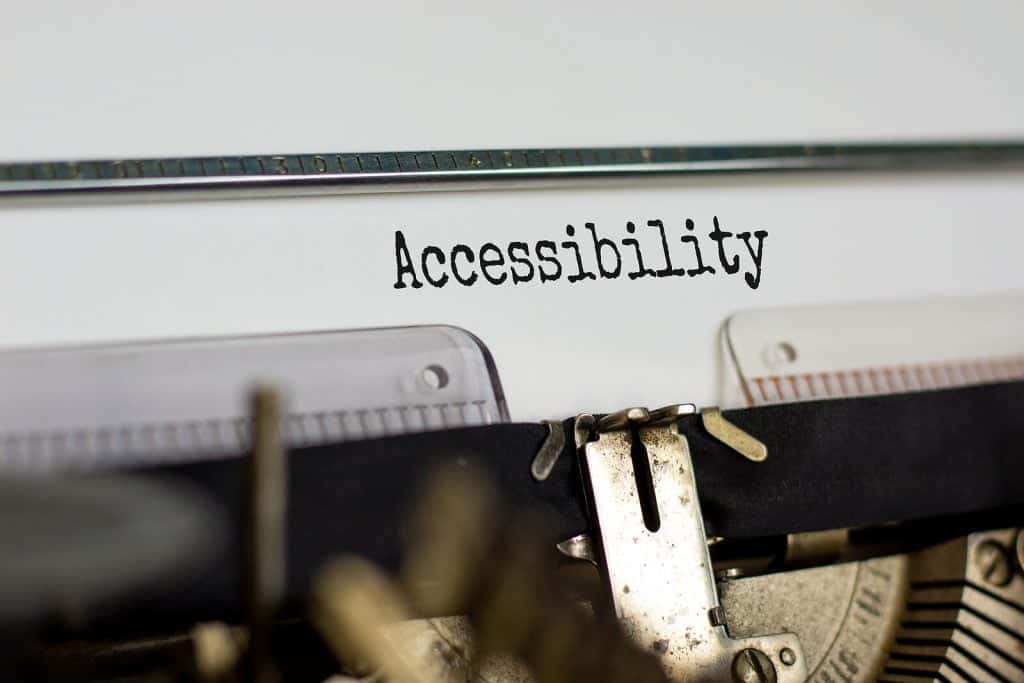What is 508 Accessibility Compliance and how can it be achieved? Read on to learn more.
Think of the World Wide Web as an extensive public library open to every community member. Anyone should be able to walk in easily and freely. Some visitors might use the stairs; others might need alternative means of entry, such as an access ramp. The availability of these access ramps allows more people to enter the library. And, the more accessible the library, the more likely people would return, share their experiences, and bring others too. Similarly, digital accessibility is the access ramp to the web.
According to the World Health Organization fact sheet, over 1 billion people experience disabilities. When estimated, this figure corresponds to about 15% of the world’s total population. So, what are the different forms of disabilities?
- Visual impairments such as color blindness.
- Cognitive issues such as speech, learning, and language impairments or attention disorder.
- Motor and neurological impairments like limited sensory and motor controls, or difficulty utilizing arms and legs.
Talking of the current business landscape, customer experience matters more than ever. Hence, people expect the compliance processes to focus more on improving and enhancing their experiences—this is where section 508 accessibility compliance changes the playing field. But, how? It ensures that everyone gets equal access to Information and Computer Technology.
Why Accessibility is the Best Way to Work?
508 accessibility compliance aims to ensure that everyone has equal access to the web content, which includes your websites and documents like PDFs. This helps in providing a more streamlined and intuitive experience for every user.
Though digital accessibility is essential for differently-abled people, it is useful for everyone. For example, not only people with disabilities but everyone uses accessibility features in their physical environments, such as handrails, automatic door openers, ramps, lower curbs, etc. Similarly, people with or without disabilities would actively use or at least prefer having the option to use accessibility features while browsing the Internet.
- Improves Overall User Experience
The design that is compliant with W3C’s Web Content Accessibility Guidelines (WCAG) can be rendered across a range of devices, operating systems, and assistive technologies. This, in turn, ascertains that every web user benefits from such considerations. Accessibility features in the digital space include semantic HTML and alt text, ARIA labeling, etc., making it easier for everyone to navigate websites and documents via keyboards.
Innovations like voice-activated devices and text-to-speech were originally designed to assist people with special needs, but all have now found a broader application. So, the takeaway here is to invest in 508 compliance services not only because it helps people with accessibility needs but also improves the overall user experience.
- A Billion Dollar Opportunity
Disability isn’t limited to birth, but aging and accidents can also limit particular abilities of the individual. As a person ages, his/her interaction with a bank, store, or utility might not be how it used to be. According to a Forrester Report dated May 2022, people with disabilities comprise the world’s largest minority market, and they spend approximately $2 trillion annually.
Besides, in the consumer market, the baby boomer generation tends to have the most disposable income. So when a business fails to abide by the accessibility standards, it not only ignores its best potential customers but also loses a considerable chunk of revenue.
Apart from the financial benefits of making your documents and website accessible, it is the right action to be taken. Just as you would provide a ramp for those in wheelchairs to enter your company premises or allow a seeing-eye dog to guide a blind person, as business owners, one must start thinking of their online presence as an extension to the brick and mortar and make accessibility accommodations. Engaging in professional websites and document remediation services might just help.
- Enhanced Search Engine Optimization
Using descriptive links and text isn’t just beneficial for accessibility; SEO can be supported too. The anchor texts added to the websites help search engines understand what it is all about. One of the most tangible advantages is that the website is awarded a higher organic search engine ranking. Professional website and PDF remediation services help in transcribing audio/video files, adding alt-text to images, captions to videos, and so on. Therefore, it is immensely beneficial for businesses to collaborate with a service provider that has good search engine optimization experience.
- Social, Corporate, and Economic Considerations
Despite the positive advantages of conforming to accessibility design standards, ignoring the entire rapidly evolving legal landscape would be naïve. Apart from hefty fines and dentures on the brand’s reputation, worst-case scenarios lead to the permanent closure of some businesses. For example, many high-profile lawsuits have already been filed against the likes of Domino’s Pizza (2019), Amazon (2018), Burger King (2018), Nike (2017), and so on.
Though embedding principles of digital accessibility is a complex business, engaging in professional 508 document remediation and website remediation services can help organizations focus on just the right aspects. Therefore, companies can easily foster inclusivity and diversity.
Putting It All Together
To end this, section 508 accessibility compliance focuses on providing equal access to the disabled population, and it aims at creating cultural inclusivity and bridging the digital gaps. Hence, complying with the accessibility laws can provide great value for businesses by ensuring that everyone can interact with their website in the best possible way and open new streams for revenue generation.

